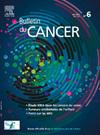恶性伤口的护理管理。
IF 0.8
4区 医学
Q4 ONCOLOGY
引用次数: 0
摘要
恶性伤口影响着 5%至 10%的转移性癌症患者。与这些病变有关的症状(出血、异味、渗出物、疼痛)的处理有时很复杂,需要多学科的合作,每个人都要发挥互补作用。可以针对每个局部症状提出局部解决方案。护士必须努力为每一位患者制定尽可能简单的伤口护理方案,使家庭护理与医院护理保持连续性。护理方案必须根据伤口波动情况经常重新调整。护理工作不仅限于伤口护理,还包括监测患者的风险和整体状况,尤其是营养状况以及与恶性伤口相关的功能和心理后果。本文章由计算机程序翻译,如有差异,请以英文原文为准。
La prise en charge infirmière des plaies tumorales
Les plaies tumorales touchent 5 à 10 % des patients atteints de cancer métastatique. La gestion des symptômes (hémorragie, odeurs, exsudats, douleurs) liés à la présence de ces lésions est parfois complexe et requiert une approche multidisciplinaire, où chacun agit en complémentarité. Des solutions locales peuvent être proposées pour chaque symptôme local. L’infirmier doit s’efforcer d’élaborer pour chaque patient un protocole de soins toujours au plus simple et permettant une continuité ville–hôpital. Les protocoles de soins doivent être fréquemment réajustés en fonction des fluctuations de la plaie. La prise en charge infirmière ne se limite pas au soin de la plaie, elle inclut la surveillance des risques et de l’état général du patient, notamment l’état nutritionnel et des conséquences fonctionnelles et psychiques liées à la présence de la plaie.
Malignant wounds affect 5 to 10% of patients with metastatic cancer. The management of symptoms (hemorrhage, odors, exudates, pain) linked to the presence of these lesions is sometimes complex and requires a multidisciplinary approach, where everyone acts in complementarity. Local solutions can be proposed for each local symptom. The nurse must strive to develop for each patient a wound care protocol that is always as simple as possible and allows for home care-hospital continuity. Care protocols must be frequently readjusted based on wound fluctuations. Nursing care is not limited to wound care, it includes monitoring the risks and the global condition of the patient, in particular the nutritional state and the functional and psychological consequences linked to the presence of the malignant wound.
求助全文
通过发布文献求助,成功后即可免费获取论文全文。
去求助
来源期刊

Bulletin Du Cancer
医学-肿瘤学
CiteScore
1.90
自引率
16.70%
发文量
224
审稿时长
37 days
期刊介绍:
Without doubt, the ''Bulletin du Cancer'' is the French language publication of reference in the field of cancerology. Official organ of the French Society of Cancer, this journal covers all the information available, whether in the form of original articles or review articles, but also clinical cases and letters to the editor, including various disciplines as onco-hematology, solids tumors, medical oncology, pharmacology, epidemiology, biology as well as fundamental research in cancerology. The journal proposes a clinical and therapeutic approach of high scientific standard and regular updates in knowledge are thus made possible. Articles can be submitted in French or English.
 求助内容:
求助内容: 应助结果提醒方式:
应助结果提醒方式:


